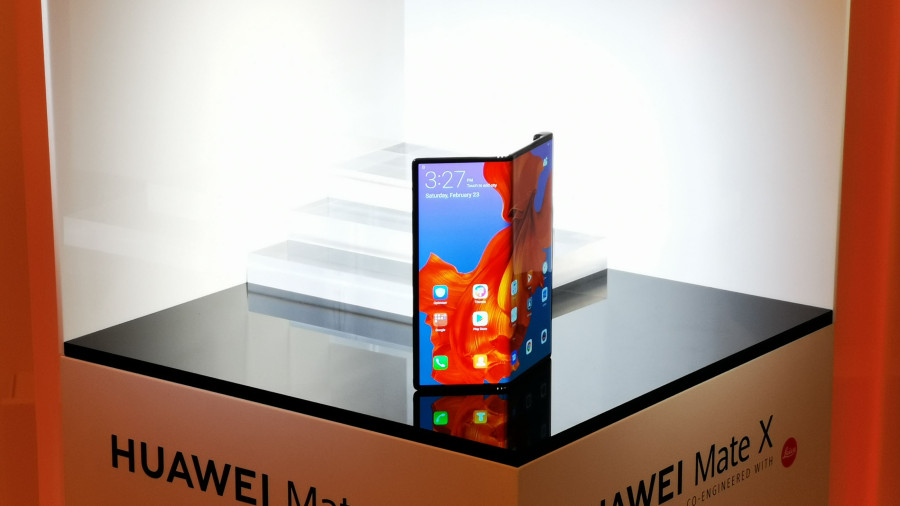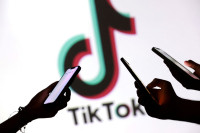Science & Technology
Foldable smartphones have been revealed but the market is skeptical
Technology is one such thing that gets incrementally better year after year Sometimes it’s bezel-less full screen phones, sometimes it’s smartphones with DSLR-like cameras, and at other times, it’s tank-like phones with massive batteries
Pratima Adhikari
Technology is one such thing that gets incrementally better year after year. Sometimes it’s bezel-less full screen phones, sometimes it’s smartphones with DSLR-like cameras, and at other times, it’s tank-like phones with massive batteries. But the most recent eye-catching advent in the mobile world definitely has to be foldable phones.
In terms of flexibility, the most we have seen until now has been bendable screens. But 2019 has shown us foldable phones, devices that can be folded up and placed inside our pockets like paper. Although this concept had been lingering around f=or quite a while now, we still cannot purchase flexible phones as the tech will only go on sale in the final quarter of this year.
At the 2019 Mobile World Congress, companies like Samsung, Xiaomi and Huawei revealed their own foldable phones. More than anything else, foldable phones are going to be a refreshing entry in the saturated and bland smartphone market. And they are hopefully going to make things interesting once again.
But discussions have also been held on whether there is a need for something like a foldable phone. In argument, tech enthusiasts say that a foldable smartphone can provide more utility than an inflexible one. We may not feel the need for it right now, but as time passes, everyone will wish they had a smartphone that can be folded any way they want, they say.
This is not just a bold claim—there are reasons that make foldable smartphones better. The primary reason being that they can finally be carried around in our pockets, as smartphone displays are getting bigger every day, making them more and more unfit for our pockets.
This might not sound like a big deal but research shows that many people break their smartphones while carrying it around in their hands. And people also tend to lose their smartphones. So, with something that can be folded and put inside our pockets, the risks of dropping it or losing it are reduced.
Similarly, with foldable smartphones, multitasking finally makes sense. Your phone can now be the size you want it to be, whether for working or typing. You can halve the display and use it like your desktop to run multiple apps and programmes. This is further going to reduce the need to carry around a laptop with you all the time.

A flexible smartphone will also mean that there’s no need for two cameras, a single or dual camera at the back will suffice for both a rear and selfie camera. That also makes way for more important sensors to be fitted, instead of a selfie camera. With foldables, the second display makes it possible to take selfies which means there will be no compromise on the quality of images and you will get the best pictures and videos.
The advent of foldable smartphones will also unlock a whole new world of features. For example, the ZTE Axon M lets users watch the same movie sitting on opposite sides of each other. Playing games will also be a whole new experience as we can have keyboards that don’t take up 50 percent of the display. The device will also be able to fit in a larger battery.
Foldable smartphones so far are just scratching the surface. But they will pave the way for so many new things that can be done, which makes this new tech difficult to ignore. The market, however, is skeptical.
“It’s a display all over and as far as I know, displays are one of the most sensitive parts of a phone,” says Riya Basnet, a recent university graduate. “So, unless the durability is uncompromised, I am okay with my non-foldable phone.”
Other than innovation, people are also looking at various factors, one of the most important being price and durability. Although manufacturers assure that their foldables can take up to so-and-so many folds, consumers have not had their own experiences, since none of the foldable phones is out in the market. However, pop-up selfie cameras have been a concept for years and they’re finally in the market, being used by actual customers. In a similar way, foldables may also make their way very soon and it seems manufacturers are sweating to do it faster than anticipated.
Samsung, in the launch of its S10 lineup, showed off its foldable phone and said that the Samsung Galaxy F, their foldable phone, may be available for sale at the end of this year. Other companies have followed suit but there is little that is concrete at this moment. But one thing is for certain—the price is going to be a scorcher.




 10.12°C Kathmandu
10.12°C Kathmandu










